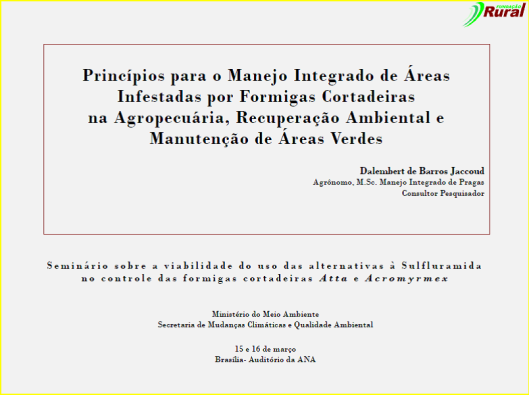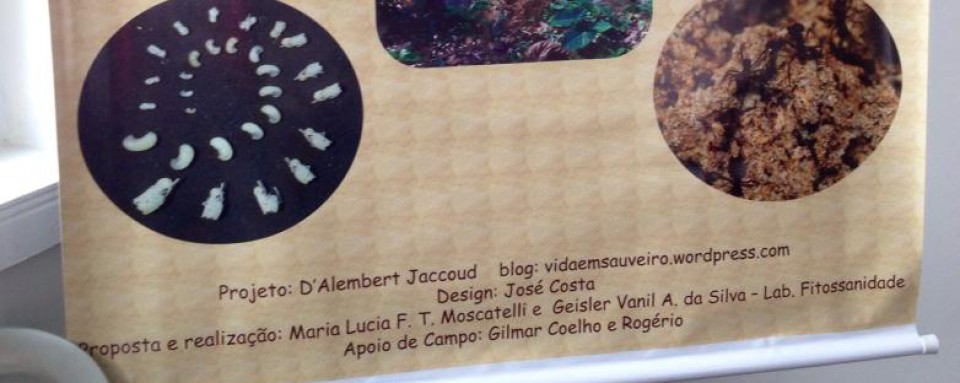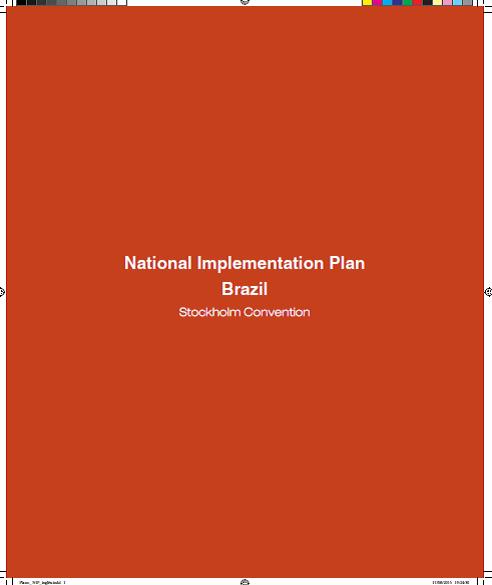Tags
integrated management, Leaf-cutting ants, Life Inside the Leaf Cutter Ant's Nest, Stockholm Convention, Sulfluramid
Stockholm Convention – Scientific report presented by the Brazilian Ministry of Agriculture updates the state of art in Integrated Management of Leaf-cutting Ants in Brazil
(click here for the full article in Portuguese)
A scientific report was prepared by the Brazilian Ministry of Agriculture – MAPA aiming to bring up-to-date information and the perspectives in Integrated Management of Leaf-cutting Ants in Brazil and the world, a document that could become a long-lasting reference on this important area, due to the relevance of the scientific information presented.
The extensive bibliographic review was prepared by a group of consultants supervised by the Ministry of Agriculture, with the objective to answer one demand from the 6th Meeting of the Conference of the Parties to the Stockholm Convention, held in Switzerland in 2013. The report was presented by the Brazilian Government to the Persistent Organic Pollutants Review Committee (POPRC), a subsidiary body to the Stockholm Convention.
Click in the figure to access the report in the Stockholm Convention’s site
(accessed in 22/05/2016).
The Brazilian National Implementation Plan of the Stockholm Convention designs the objectives to achieve the total banning of sulfluramid’s use in Brazil, but the agricultural sector does not believe this goal is possible to achieve in the near future, as it is seem justified by the report produced by the scientists and presented by the Ministry for assessment by the Secretariat of the Conference of the Parties. Brazil depends on sulfuramid-based bait insecticide to the control of the leaf-cutting ants Atta spp and Acromyrmex spp, a very important group of insect-pest native to Latin America.
Click in the figure to access the report in the Brazilian Ministry of Environment’s site
(accessed in 22/05/2016).
The scientific report was criticized, however, in the Seminar on the viability of alternatives to sulfluramid in the control of leaf-cutting ants, promoted recently by the Brazilian Ministry of Environment, in the sense it is mainly focused on the control of leaf-cutters in the countries’ forest sector (7 million hectares), which is the single major user of the sulfluramid-baits in the world. The demands on the development of integrated management technologies for the control of these ants regarding agriculture (5,5 million rural properties), urban gardening, environmental restoration and other users of the pollutant was addressed, in the Seminar, by the Brazilian agronomist Dalembert Jaccoud, from the Fundação do Desenvolvimento Rural do DF.





